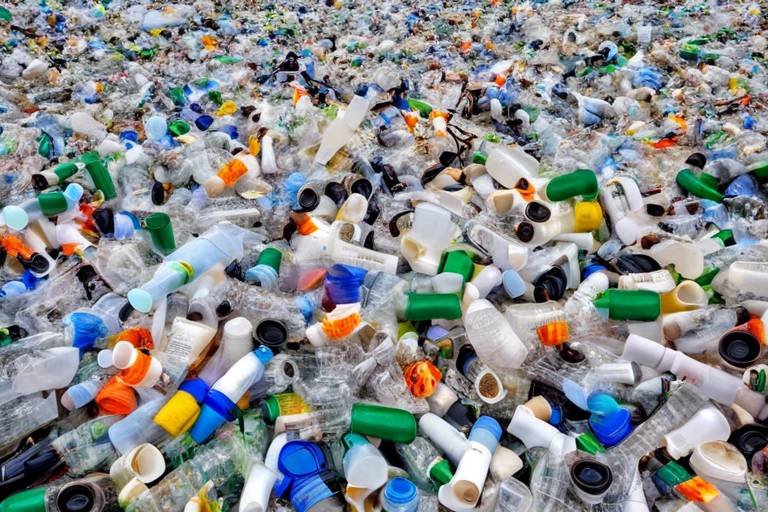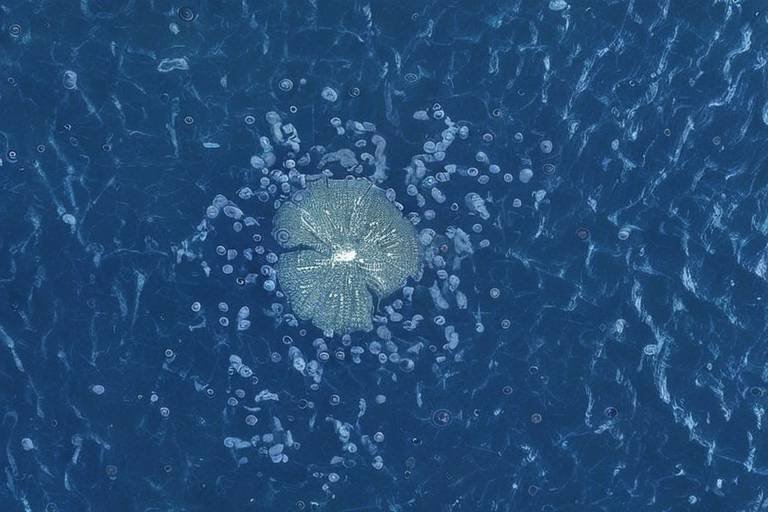Exploring the Intersection of Science and Public Policy
In today's rapidly changing world, the intersection of science and public policy has never been more critical. As we face complex challenges like climate change, public health crises, and technological advancements, the need for informed decision-making based on scientific evidence is paramount. But how exactly does scientific research influence policy decisions? And what challenges arise in this intricate dance between scientists and policymakers? This article aims to explore these questions, shedding light on the vital role science plays in shaping public policy and the hurdles that must be overcome to foster effective collaboration.
Understanding how scientific evidence shapes policy decisions is crucial. Science informs public policy in various ways, including:
- Data-Driven Decision Making: Policymakers rely on empirical data to craft legislation that addresses societal needs.
- Risk Assessment: Scientific research helps evaluate risks associated with certain policies, guiding safer and more effective outcomes.
- Innovative Solutions: Scientific advancements often lead to new technologies and methods that can solve pressing public issues.
For instance, during the COVID-19 pandemic, scientific research played a pivotal role in shaping health policies, from vaccine development to public health guidelines. By prioritizing data-driven approaches, governments can create policies that not only address current issues but also anticipate future challenges.
Despite the potential benefits, significant barriers exist in integrating science into public policy. One of the most prominent challenges is political resistance. Often, policymakers may be hesitant to adopt scientific recommendations due to their political beliefs or public opinion. This resistance can create a chasm between scientific findings and policy implementation.
Additionally, funding issues can limit research opportunities, resulting in insufficient data to inform policy decisions. When scientific studies lack the necessary financial support, the insights that could benefit society may never reach the decision-makers. Furthermore, communication gaps between scientists and policymakers can hinder the effective transfer of knowledge, leading to misunderstandings or misinterpretations of scientific data.
Political beliefs significantly influence how science is perceived and utilized in policymaking. For example, in some regions, climate change science might be embraced by one political party while dismissed by another. This disparity can lead to a lack of cohesive policy responses to critical issues, ultimately affecting the well-being of the public. Understanding these ideological divides is essential for scientists aiming to engage effectively with policymakers.
There are numerous examples where science has successfully influenced policy decisions. One notable case is the Clean Air Act in the United States, which was informed by extensive scientific research on air pollution and its health impacts. This legislation not only improved air quality but also demonstrated the power of collaboration between scientists and policymakers in addressing environmental challenges.
On the flip side, analyzing instances where science failed to inform policy effectively can provide valuable insights. For example, the handling of the opioid crisis revealed how a lack of scientific understanding and communication led to widespread public health issues. Key takeaways from these failures include the necessity for ongoing dialogue between scientists and policymakers and the importance of public engagement in shaping policies that are informed by scientific evidence.
Effective communication is essential for bridging the gap between science and policy. Scientists must convey their research findings to policymakers and the public in an impactful manner. This can be achieved through:
- Simplifying Complex Concepts: Use clear and accessible language to explain scientific findings.
- Utilizing Visual Aids: Graphs, infographics, and charts can help illustrate key data points effectively.
- Engaging in Public Forums: Participating in community discussions can foster understanding and trust.
By adopting these strategies, scientists can enhance the likelihood that their research will inform policy decisions, ultimately leading to better societal outcomes.
Engaging the public in scientific discussions can significantly enhance policy outcomes. When the public is informed and involved, they can advocate for policies that reflect scientific evidence. This participation helps ensure that policies are not only scientifically sound but also socially acceptable. Moreover, public engagement fosters a sense of ownership over the decision-making process, which can lead to more sustainable and effective policy implementation.
Trust is critical for effective collaboration between the scientific community and policymakers. Strategies for fostering trust include:
- Transparency: Openly sharing research methods and data can build credibility.
- Consistent Communication: Regular updates and dialogues can strengthen relationships.
- Inclusivity: Involving diverse voices in discussions can enhance understanding and cooperation.
By prioritizing trust, the scientific community can ensure that their insights are valued and considered in decision-making processes.
Exploring new methods of communication can enhance the public's understanding of science. Innovative approaches such as social media campaigns, interactive platforms, and public demonstrations can effectively bridge the gap between science and policy. These tools enable scientists to reach wider audiences and engage with them in meaningful ways, ultimately fostering a culture of informed public discourse.
Q1: How does scientific research influence public policy?
A1: Scientific research provides the evidence and data necessary for policymakers to make informed decisions, addressing societal issues effectively.
Q2: What are the main challenges in integrating science into public policy?
A2: Challenges include political resistance, funding issues, and communication gaps between scientists and policymakers.
Q3: Why is public engagement important in science-policy integration?
A3: Public engagement ensures that policies reflect societal needs and fosters a sense of ownership over the decision-making process.
Q4: What strategies can scientists use to communicate their findings?
A4: Scientists can simplify complex concepts, use visual aids, and engage in public forums to effectively convey their research.

The Role of Science in Policymaking
Understanding how scientific evidence shapes policy decisions is crucial in today's world. Science is not just an academic pursuit; it serves as a backbone for effective governance. When policymakers rely on data-driven decision-making, they can craft policies that are not only effective but also sustainable. Think about it: would you want a doctor who relies on gut feelings rather than medical research? Similarly, policymakers need to base their decisions on solid scientific research to tackle pressing societal issues such as climate change, healthcare, and public safety.
One of the most significant ways science informs public policy is through research findings. These findings can provide insights into the potential impacts of a policy before it is enacted. For instance, when considering new environmental regulations, scientists can model the effects of pollution on public health and the economy. This allows policymakers to weigh the pros and cons effectively. Moreover, scientific studies often highlight the long-term benefits of certain policies, helping leaders to see beyond immediate political gains.
Additionally, science plays a critical role in identifying emerging trends and challenges. Policymakers who stay informed about the latest scientific advancements can better anticipate future needs. For example, the rapid development of technology in the healthcare sector, such as telemedicine, has prompted lawmakers to rethink regulations to ensure that they are keeping pace with innovations. This responsiveness not only helps in creating effective policies but also builds public trust in governmental institutions.
Furthermore, the integration of science into policymaking encourages a culture of collaboration between various stakeholders. When scientists, policymakers, and the public engage in dialogue, it fosters a more comprehensive understanding of complex issues. This collaboration can take many forms, such as public forums, scientific advisory panels, and interdisciplinary research projects. Each of these approaches contributes to a more informed policymaking process.
However, the path to integrating science into policy isn't always smooth. There are challenges that can hinder this vital relationship. For instance, a lack of understanding of scientific methods among policymakers can lead to misinterpretations of data. Additionally, the fast-paced nature of scientific research can sometimes outstrip the slower processes of policy formulation. To mitigate these issues, it's essential for scientists to communicate their findings in a way that is accessible and relevant to policymakers.
In conclusion, the role of science in policymaking is not just about numbers and graphs; it's about making informed choices that affect the lives of millions. By harnessing the power of scientific research, governments can create policies that are not only effective but also equitable. As we move forward, the need for a robust partnership between the scientific community and policymakers will only grow, ensuring that our future is informed by the best available evidence.
- Why is scientific evidence important in policymaking?
Scientific evidence provides a factual basis for decisions, allowing policymakers to address complex issues effectively and sustainably.
- What are some challenges faced in integrating science into policy?
Challenges include political resistance, funding issues, and communication gaps between scientists and policymakers.
- How can scientists communicate their findings effectively?
Scientists can use clear language, visual aids, and engage in public discussions to make their research accessible to policymakers and the public.

Challenges in Integrating Science and Policy
Integrating science into public policy is like trying to fit a square peg into a round hole; it sounds simple in theory, but in practice, it can be quite complicated. One of the primary challenges is the political resistance that often arises when scientific findings contradict established beliefs or agendas. For instance, policymakers may hesitate to adopt policies based on scientific evidence if such policies might upset their political base or contradict their personal ideologies. This creates a significant barrier, as decisions that should ideally be informed by empirical evidence can instead be swayed by political considerations.
Additionally, funding issues play a crucial role in the integration of science and policy. Scientific research often requires substantial financial investment, and when budgets are tight, funding for scientific studies can be one of the first casualties. Policymakers may prioritize immediate economic needs over long-term scientific research, leading to a lack of data that could inform better decision-making. Without adequate funding, scientists may struggle to produce the comprehensive studies needed to influence policy effectively.
Moreover, there exists a notable communication gap between scientists and policymakers. Scientists are trained to focus on data, methodologies, and technical details, while policymakers often prioritize the broader implications of policies and their political ramifications. This disparity can lead to misunderstandings or misinterpretations of scientific findings. For example, a scientist might present complex data that seems clear to them but is convoluted for a policymaker who needs straightforward, actionable insights. To bridge this gap, both parties must engage in meaningful dialogue where scientists can present their findings in a way that resonates with policymakers' needs.
Another significant challenge is the public perception of science. In an era where misinformation can spread like wildfire, the public's trust in scientific findings is crucial. If the public is skeptical of science, policymakers may be less inclined to base their decisions on scientific evidence, fearing backlash from constituents. Thus, building public understanding and trust in science is essential for effective policy integration.
In summary, while the integration of science into public policy holds immense potential for enhancing societal well-being, several challenges must be addressed. These include political resistance, funding limitations, communication gaps, and public skepticism. Overcoming these obstacles requires concerted efforts from both the scientific community and policymakers to foster collaboration and understanding.
- Why is it important to integrate science into public policy?
Integrating science into public policy helps ensure that decisions are based on empirical evidence, leading to more effective and sustainable outcomes for society. - What are common barriers to integrating science and policy?
Common barriers include political resistance, funding issues, communication gaps, and public skepticism towards scientific findings. - How can scientists improve communication with policymakers?
Scientists can improve communication by simplifying their findings, using clear language, and actively engaging with policymakers to understand their needs.

The Impact of Political Ideology
The intersection of science and public policy is often a complex terrain, heavily influenced by political ideology. This influence can act as a double-edged sword, shaping how scientific research is perceived, accepted, and ultimately integrated into policy decisions. For instance, when a scientific finding aligns with the beliefs of a particular political group, it may be embraced and championed. Conversely, if the evidence contradicts a group's ideology, it can be dismissed or even attacked. This phenomenon raises a critical question: how can we ensure that scientific evidence is evaluated on its merits rather than through the lens of political bias?
To illustrate this point, consider the ongoing debates surrounding climate change. In many regions, political affiliation significantly impacts how individuals understand and respond to climate science. Research has shown that those with a conservative ideology are often more skeptical of climate change and its implications, while liberal individuals tend to accept the scientific consensus. This divide can lead to a significant gap in public policy, as policies aimed at combating climate change may be stalled or rejected based on ideological grounds rather than scientific evidence.
The relationship between political ideology and science can be summarized in a few key ways:
- Acceptance of Evidence: Political beliefs can dictate whether scientific findings are accepted or rejected, influencing everything from environmental regulations to healthcare policies.
- Funding for Research: Political priorities often determine the allocation of funding for scientific research. If a political party does not prioritize a specific issue, funding for related research may dwindle.
- Public Perception: The way political leaders communicate about scientific issues can shape public opinion. Politicians who emphasize scientific consensus can foster public trust, while those who sow doubt can create confusion.
Moreover, the impact of political ideology is not just limited to national policies; it also trickles down to local governance. City councils and state legislatures may adopt policies that reflect the prevailing political ideology of their constituents, which can lead to a patchwork of scientific acceptance across different regions. This inconsistency can create challenges for scientists trying to communicate their findings and advocate for evidence-based policies.
Ultimately, bridging the gap between science and political ideology requires a concerted effort from both scientists and policymakers. Scientists must learn to navigate the political landscape, understanding the values and beliefs of those they are trying to influence. On the other hand, policymakers need to prioritize scientific evidence in their decision-making processes, setting aside personal biases to focus on what is best for the public.
In conclusion, the impact of political ideology on science and public policy is profound and multifaceted. By fostering a culture of open dialogue and collaboration, we can work towards a future where scientific evidence informs policy decisions, regardless of political affiliation. This shift is not only crucial for effective policymaking but also for the overall health of our democracy and society.
- How does political ideology affect public understanding of science? Political ideology can shape how individuals interpret scientific findings, leading to acceptance or skepticism based on their beliefs.
- What role do politicians play in shaping public perception of science? Politicians can influence public perception by how they communicate scientific issues, either promoting trust in science or fostering doubt.
- Can scientists influence policy decisions despite political barriers? Yes, through effective communication and collaboration, scientists can advocate for evidence-based policies even in politically charged environments.

Case Studies of Successful Integration
When we think about the intersection of science and public policy, it's essential to highlight real-world examples where this collaboration has led to significant changes. One of the most notable instances is the integration of scientific research in the realm of public health, particularly regarding tobacco control. In the late 20th century, extensive studies revealed the detrimental effects of smoking, leading to the implementation of policies that restricted tobacco advertising and promoted smoking cessation programs. These decisions were not made in a vacuum; they were rooted in robust scientific evidence that demonstrated the health risks associated with tobacco use.
Another compelling case study is the role of climate science in shaping environmental policy. The Intergovernmental Panel on Climate Change (IPCC) has been instrumental in synthesizing scientific data and presenting it to policymakers worldwide. This has resulted in international agreements such as the Paris Agreement, where countries committed to reducing greenhouse gas emissions based on scientific findings. The success of these initiatives underscores the importance of scientists working closely with policymakers to create actionable strategies that address pressing environmental issues.
Moreover, the field of public health has seen successful integration through vaccination policies. For instance, the widespread adoption of childhood vaccination programs in many countries has been driven by extensive research demonstrating their efficacy in preventing disease outbreaks. By utilizing data from scientific studies, policymakers have successfully implemented mandatory vaccination laws, contributing to herd immunity and protecting vulnerable populations.
These case studies illustrate that when science and policy work hand in hand, the outcomes can lead to healthier societies and a more sustainable environment. However, it's crucial to recognize that successful integration doesn't happen automatically; it requires effective communication and a willingness from both scientists and policymakers to collaborate. The lessons learned from these examples can serve as a roadmap for future endeavors in bridging the gap between scientific research and public policy.
To further enhance our understanding of successful integration, let's take a look at a table summarizing key case studies:
| Case Study | Field | Outcome |
|---|---|---|
| Tobacco Control | Public Health | Reduction in smoking rates and associated health risks |
| Climate Change Policy | Environmental Science | International agreements to reduce emissions |
| Vaccination Programs | Public Health | Increased vaccination rates and disease prevention |
In conclusion, the integration of science into public policy is not just beneficial; it's essential for addressing the complex challenges we face today. By learning from successful case studies, we can foster a more collaborative environment where scientific evidence informs policy decisions, ultimately leading to a healthier and more informed society.
- What is the importance of integrating science into public policy?
Integrating science into public policy ensures that decisions are based on evidence, leading to more effective and informed outcomes. - How can scientists communicate their findings to policymakers?
Scientists can use clear, concise language, visual aids, and engage in direct dialogues with policymakers to effectively communicate their research. - What are some challenges in integrating science and policy?
Challenges include political resistance, funding issues, and communication gaps between scientists and policymakers. - Can public engagement improve policy outcomes?
Yes, engaging the public in scientific discussions can lead to better understanding and support for policies based on scientific evidence.

Lessons from Failed Integrations
When we look back at instances where science failed to inform public policy effectively, it becomes evident that there are crucial lessons to be learned. One of the most significant takeaways is the importance of clear communication. In many cases, scientific findings were either misinterpreted or poorly communicated to policymakers, leading to decisions that did not reflect the best available evidence. For example, during the early stages of the COVID-19 pandemic, conflicting messages about mask usage created confusion among the public and policymakers alike. This highlights the necessity for scientists to present their data in a way that is both accessible and actionable.
Another lesson revolves around the concept of timeliness. Science is often a slow process, but policy decisions can be urgent. When scientific research is delayed or not aligned with the immediate needs of policymakers, the opportunity for effective integration is lost. A case in point is climate change research, where the urgency of policy action has often outpaced the scientific community's ability to deliver clear, actionable insights. This mismatch can result in missed opportunities for proactive measures that could mitigate future risks.
Moreover, the role of political context cannot be overlooked. Policies shaped in a vacuum, without consideration for the prevailing political climate, often fail to gain traction. For instance, the introduction of certain environmental regulations has faced significant pushback due to political ideologies that prioritize economic growth over ecological sustainability. Understanding the political landscape is essential for scientists who wish to see their research translated into effective policy.
Additionally, the need for collaboration between scientists and policymakers is paramount. Many failed integrations stem from a lack of ongoing dialogue between these two groups. For example, when scientists operate in isolation, their findings may not align with the practical realities that policymakers face. Establishing regular communication channels can help ensure that scientific insights are not only heard but also considered in the decision-making process. This could involve creating joint task forces or advisory committees that include both scientists and policymakers, fostering a collaborative environment.
Lastly, we must recognize the value of public engagement in the policy-making process. Science that is disconnected from public sentiment can lead to resistance and backlash. For instance, the rollout of vaccination programs often encounters skepticism when the public feels excluded from the conversation about scientific findings. Engaging the public through transparent discussions and educational initiatives can help bridge the gap, making it easier for policymakers to adopt scientifically backed recommendations.
In summary, the lessons from failed integrations between science and public policy serve as a roadmap for future efforts. By focusing on clear communication, timely research, understanding political contexts, fostering collaboration, and engaging the public, we can enhance the effectiveness of science in shaping meaningful policies that address pressing societal challenges.
- Why is effective communication important in science-policy integration?
Effective communication ensures that scientific findings are accurately understood and can be translated into actionable policy decisions. - How can scientists engage with policymakers?
Scientists can engage with policymakers through regular meetings, advisory committees, and providing clear, concise reports that highlight the implications of their research. - What role does public opinion play in science and policy?
Public opinion can significantly influence policy decisions, making it essential for scientists to engage with the community to build trust and understanding. - What are some examples of successful science-policy integration?
Successful integrations often involve collaborative efforts, such as task forces that include both scientists and policymakers working together to address specific issues.

Communication Strategies for Scientists
When it comes to bridging the gap between science and public policy, effective communication is not just a bonus; it's a necessity. Scientists often find themselves in a position where they must convey complex research findings to policymakers who may lack a deep understanding of the scientific nuances. So, how can scientists ensure their voices are heard and understood? Here are some strategies to enhance communication:
First and foremost, scientists should aim to simplify their language. Technical jargon can be a barrier that prevents policymakers from grasping the critical implications of scientific studies. Instead of drowning them in a sea of complex terms, scientists can use analogies and relatable examples to illustrate their points. For instance, explaining climate change using the analogy of a fever can help policymakers understand the urgency of the issue—just as a fever indicates an underlying health problem, rising global temperatures signal a critical environmental crisis.
Another vital strategy is to tailor the message to the audience. Different stakeholders have varying levels of expertise and interests. For example, a local government official may be more interested in the immediate impacts of scientific research on their community, while a national policymaker might focus on broader implications. By customizing the communication approach, scientists can make their messages more relevant and impactful. This might involve creating specific reports, infographics, or presentations that cater to the audience's needs.
Additionally, building relationships with policymakers is crucial. Scientists should strive to establish trust and rapport with those who make decisions that affect their work. Regularly engaging with policymakers through meetings, workshops, or informal discussions can create a foundation of mutual understanding. When scientists are seen as reliable sources of information, their research is more likely to be considered in the policymaking process.
Moreover, utilizing modern communication tools can significantly enhance the outreach of scientific findings. Social media platforms, blogs, and podcasts offer scientists innovative ways to share their research with a broader audience. For instance, a scientist could summarize their latest findings in a short video clip or an engaging blog post, making the information accessible to non-specialists. This approach not only educates the public but also attracts the attention of policymakers who are increasingly using these platforms for information.
Finally, collaboration with communication professionals can be a game-changer. Scientists might excel in their fields of expertise, but they may not always be skilled communicators. Partnering with public relations experts or science communicators can help scientists craft messages that resonate with policymakers and the public alike. This collaboration can lead to the creation of compelling narratives that highlight the significance of scientific research in addressing societal challenges.
In summary, effective communication strategies for scientists revolve around simplifying language, tailoring messages, building relationships, leveraging modern tools, and collaborating with communication experts. By embracing these strategies, scientists can significantly enhance their influence on public policy and ensure that their research contributes to informed decision-making.
- Why is communication important for scientists? Effective communication helps scientists convey their research findings to policymakers and the public, ensuring that scientific evidence informs decision-making.
- How can scientists simplify their communication? Scientists can use analogies, avoid jargon, and focus on relatable examples to make complex concepts easier to understand.
- What role do modern tools play in science communication? Social media and digital platforms allow scientists to reach a wider audience and engage with policymakers in innovative ways.
- Why should scientists collaborate with communication professionals? Collaboration can enhance the clarity and impact of scientific messages, making them more effective in influencing policy.

The Importance of Public Engagement
Public engagement is not just a buzzword; it's a vital component in the realm of science and policymaking. When the general public is actively involved in scientific discussions, it can lead to **better policy outcomes**. Think of it like a two-way street—scientists provide the data and insights, while the public offers perspectives that can shape how that data is interpreted and applied. This synergy can create policies that are not only scientifically sound but also resonate with the values and needs of the community.
Moreover, public engagement fosters a sense of ownership among citizens regarding the policies that affect their lives. When people feel heard and included in the decision-making process, they are more likely to support and adhere to policies. This is particularly crucial in areas such as environmental policy, healthcare, and education, where the stakes are high and the implications are far-reaching. By involving the public, policymakers can tap into a wealth of knowledge and experiences, enriching the policy-making process.
To illustrate the significance of public engagement, consider the following points:
- Enhances Understanding: When the public is engaged, they gain a better understanding of scientific concepts and the rationale behind policies. This can demystify complex issues, making them more approachable.
- Increases Transparency: Engaging the public fosters transparency in the policymaking process. When people see how decisions are made and the evidence that supports them, it builds trust.
- Encourages Diverse Perspectives: Public engagement brings a variety of viewpoints to the table, ensuring that policies cater to a broader spectrum of the community.
Additionally, public engagement can lead to innovative solutions. When diverse groups come together to discuss scientific issues, they often generate creative ideas that may not have been considered by experts alone. This collaborative approach not only enriches the policy-making process but also helps to identify potential pitfalls early on, allowing for adjustments before policies are implemented.
However, engaging the public is not without its challenges. There can be significant barriers, such as misinformation, lack of access to information, and varying levels of scientific literacy. To overcome these hurdles, communication strategies must be tailored to the audience. For instance, using social media platforms to disseminate information can reach younger demographics, while community forums may be more effective for older generations. The goal is to create an inclusive environment where everyone feels empowered to participate.
In conclusion, the importance of public engagement in the science-policy nexus cannot be overstated. It not only enhances the quality of policies but also builds a more informed and engaged citizenry. As we move forward, fostering this engagement should be a priority for both scientists and policymakers, ensuring that the voices of the public are not just heard but actively sought out in the decision-making process.
- Why is public engagement important in science and policy?
- Public engagement ensures that policies are informed by a diverse range of perspectives, leading to more effective and accepted outcomes.
- How can scientists effectively engage the public?
- Scientists can utilize social media, community forums, and educational outreach to communicate their findings and gather public input.
- What are the challenges of public engagement?
- Challenges include misinformation, varying levels of scientific literacy, and ensuring accessibility to all community members.

Building Trust Between Scientists and Policymakers
Building trust between scientists and policymakers is akin to constructing a bridge over turbulent waters; it requires careful planning, robust materials, and ongoing maintenance. The relationship between these two groups is essential for effective governance and informed decision-making. When scientists and policymakers work together harmoniously, they can address pressing societal issues with data-driven solutions. However, trust is not built overnight. It takes consistent effort, transparency, and open communication to foster a collaborative environment.
One of the primary ways to build trust is through consistent engagement. Scientists should not only present their findings but also actively participate in discussions with policymakers. This means attending meetings, offering insights during policy formulation, and being available for consultations. Policymakers, on the other hand, should be open to listening and considering scientific evidence when making decisions. This mutual respect can create a foundation of trust that benefits both parties.
Another critical aspect is transparency. Scientists must be clear about their research methodologies, potential biases, and limitations of their findings. When policymakers understand the context and reliability of the data presented, they are more likely to trust the recommendations made. For instance, if a scientist is transparent about the uncertainties in their research, it helps policymakers make informed decisions without overreliance on potentially flawed data.
Moreover, establishing common goals can significantly enhance trust. When both scientists and policymakers align their objectives—such as improving public health, addressing climate change, or enhancing education—they create a shared purpose. This alignment fosters collaboration and encourages both parties to work together towards a common end, reinforcing trust through shared success.
To illustrate the importance of trust-building, we can look at a few key strategies:
- Regular Communication: Frequent updates and discussions can keep both parties informed and engaged.
- Joint Training Sessions: Workshops that include both scientists and policymakers can help demystify scientific processes and enhance understanding.
- Feedback Mechanisms: Establishing channels for feedback allows both sides to express concerns and suggestions, promoting a two-way dialogue.
In conclusion, building trust between scientists and policymakers is a vital process that requires dedication and effort from both sides. By engaging consistently, being transparent, and aligning goals, they can create a collaborative environment that leads to effective and informed public policy. As they work together, the benefits extend beyond individual projects, ultimately leading to enhanced societal outcomes and a stronger relationship between science and governance.
Q1: Why is trust important between scientists and policymakers?
A1: Trust ensures that policymakers can rely on scientific evidence when making decisions, leading to more effective and informed policies.
Q2: How can scientists effectively communicate their findings to policymakers?
A2: Scientists can communicate effectively by simplifying complex information, providing clear recommendations, and engaging in regular discussions with policymakers.
Q3: What role does transparency play in building trust?
A3: Transparency helps policymakers understand the context and limitations of research, which fosters confidence in scientific recommendations.
Q4: Can joint training sessions really help in building trust?
A4: Yes, joint training sessions can enhance understanding between scientists and policymakers, making it easier for them to collaborate effectively.

Innovative Approaches to Science Communication
In today's fast-paced world, traditional methods of science communication often fall short in engaging the public and policymakers alike. With the rapid evolution of technology and media, it’s essential to embrace innovative approaches that resonate with diverse audiences. Imagine a world where complex scientific concepts are easily digestible and relatable—this is not just a dream, but a reality we can create through effective communication strategies.
One of the most exciting developments in science communication is the use of social media platforms. These platforms have transformed how scientists share their research, making it accessible to a broader audience. Scientists can now use platforms like Twitter, Instagram, and TikTok to present their findings in engaging ways. For example, short videos or infographics can simplify intricate topics, making them more relatable. This approach not only captures attention but also encourages conversations around scientific issues.
Moreover, interactive platforms are becoming increasingly popular for bridging the gap between science and the public. Websites that offer interactive data visualizations allow users to explore scientific data in a hands-on manner. These tools empower individuals to engage with the material actively, fostering a deeper understanding. Imagine a climate change model that lets users manipulate variables to see potential outcomes—this kind of engagement can spark curiosity and drive public interest in science.
Another innovative approach is the integration of storytelling techniques into science communication. By framing scientific findings within a narrative context, scientists can make their work more relatable and memorable. For instance, instead of just presenting data on the effects of pollution, a scientist might share a compelling story about a community affected by environmental changes. This method not only humanizes the data but also creates an emotional connection with the audience, making the science more impactful.
Furthermore, collaborations between scientists and artists can yield fascinating results. Art installations, performances, and multimedia projects can convey scientific concepts in visually stunning and thought-provoking ways. These collaborations can engage audiences who may not typically seek out scientific information, thereby broadening the reach of important messages. For example, a public art piece depicting the impact of climate change can serve as a powerful reminder of the urgency of the issue.
Lastly, community engagement initiatives play a vital role in fostering public understanding of science. Scientists can organize workshops, public lectures, and hands-on activities that invite community members to participate in the scientific process. These initiatives help demystify science and encourage dialogue between scientists and the public, ensuring that everyone feels included in the conversation. By making science more accessible, we can cultivate a society that values and understands the importance of scientific research.
In conclusion, the landscape of science communication is evolving, and it's crucial for scientists to adopt innovative approaches to engage with the public effectively. By leveraging social media, interactive platforms, storytelling, collaborations with artists, and community engagement, we can create a more informed society that appreciates and understands the significance of science in policymaking.
- What are some effective ways to engage the public in science communication?
Utilizing social media, interactive data visualizations, and community workshops are some effective methods to engage the public.
- How can storytelling enhance scientific communication?
Storytelling can make scientific findings more relatable and memorable by framing them within a narrative context, fostering emotional connections.
- Why is trust important in science communication?
Trust ensures that scientific advice is valued and considered in decision-making, facilitating better collaboration between scientists and policymakers.
Frequently Asked Questions
- How does scientific research influence public policy decisions?
Scientific research plays a crucial role in shaping public policy by providing evidence-based insights that inform decision-making. Policymakers rely on data and findings from scientific studies to address societal issues, ensuring that policies are effective and grounded in reality.
- What are the main challenges in integrating science into public policy?
There are several challenges, including political resistance, funding limitations, and communication gaps between scientists and policymakers. These obstacles can hinder the effective use of scientific evidence in shaping policies that address critical issues.
- How do political ideologies affect the acceptance of scientific findings?
Political beliefs can significantly influence how scientific research is perceived and utilized. Different ideologies may lead to varying levels of acceptance or rejection of scientific evidence, impacting the implementation of policies based on that research.
- Can you provide examples of successful integration of science into policy?
Yes! There are numerous case studies where science has successfully influenced policy decisions. These examples showcase effective collaboration between scientists and policymakers, leading to impactful solutions for societal challenges.
- What lessons can be learned from failed integrations of science and policy?
Analyzing failed integrations offers valuable insights. Key takeaways include the importance of clear communication, the need for interdisciplinary collaboration, and the necessity of building trust between scientists and policymakers to ensure that scientific advice is valued.
- What strategies can scientists use to communicate their findings effectively?
Scientists can adopt various strategies, such as simplifying complex data, using storytelling techniques, and engaging with the media. Effective communication helps bridge the gap between scientific research and policy, making findings accessible and actionable.
- Why is public engagement important in scientific discussions?
Engaging the public enhances policy outcomes by fostering a better understanding of scientific issues. When the public is informed and involved, they can contribute to discussions, ensuring that policies reflect the needs and values of the community.
- How can trust be built between scientists and policymakers?
Trust can be fostered through transparent communication, consistent collaboration, and demonstrating the relevance of scientific advice in decision-making. Building strong relationships ensures that policymakers value and consider scientific insights.
- What innovative approaches can improve science communication?
Innovative methods such as social media campaigns, interactive platforms, and visual storytelling can enhance public understanding of science. These tools help make complex information more relatable and engaging, bridging the gap between science and policy.



















